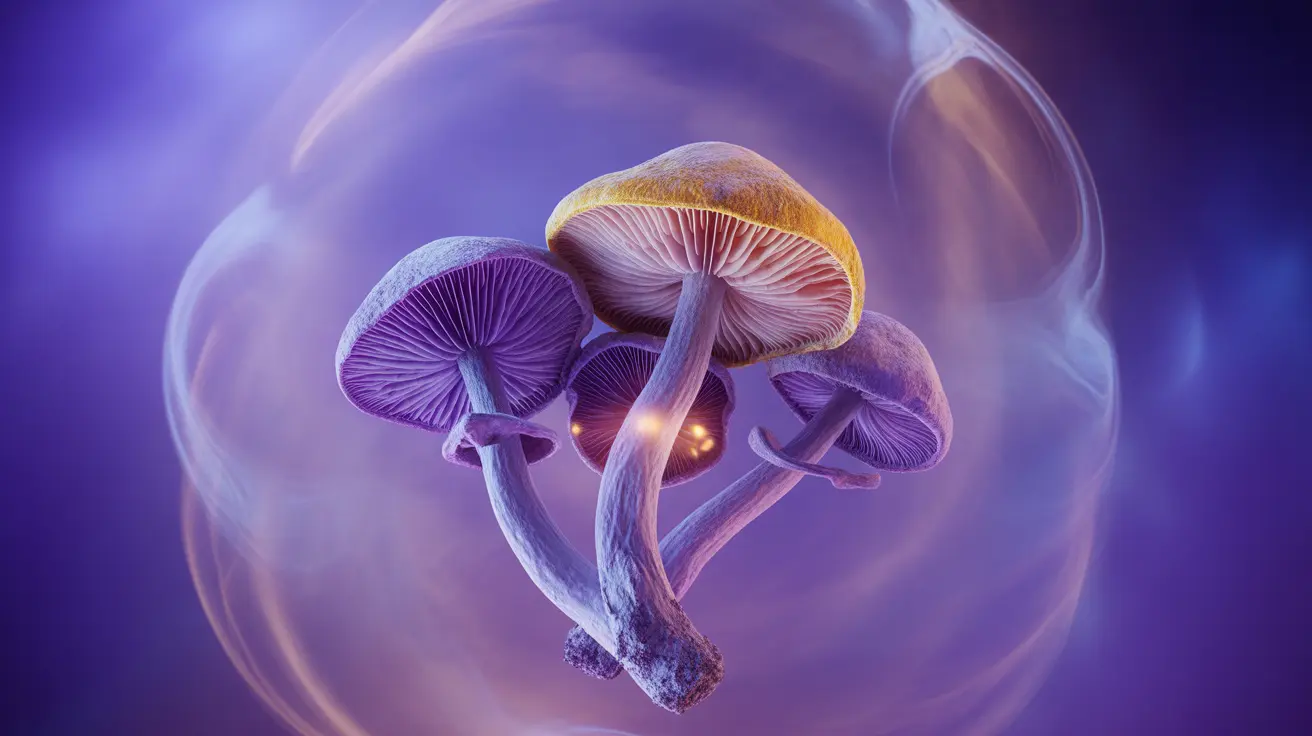Psychedelic substances like LSD (lysergic acid diethylamide) and psilocybin mushrooms have garnered significant attention in both research and public discourse. Understanding the distinct characteristics, effects, and safety considerations of these substances is crucial for harm reduction and informed decision-making.
This comprehensive guide examines the key differences between LSD and psilocybin mushrooms, exploring their unique properties, effects on the mind and body, and important safety considerations. Note that while these substances are currently illegal in most jurisdictions, growing scientific research explores their potential therapeutic applications.
Chemical Composition and Natural Origins
LSD is a synthetic compound first synthesized in 1938 from ergot fungus derivatives. In contrast, psilocybin mushrooms are naturally occurring fungi containing the compounds psilocybin and psilocin. This fundamental difference influences how these substances interact with the human body and brain.
Duration and Onset of Effects
The timeline of effects varies significantly between these substances. LSD typically produces effects lasting 8-12 hours, with onset occurring within 30-60 minutes after consumption. Psilocybin mushrooms generally create effects lasting 4-6 hours, with effects beginning 20-40 minutes after ingestion.
Psychological and Perceptual Effects
Visual and Sensory Changes
LSD often produces more intense visual distortions, featuring geometric patterns, color enhancement, and complex hallucinations. Mushroom experiences typically involve more subtle visual effects, often described as "organic" or "earthy," with enhanced color perception and flowing patterns.
Emotional and Cognitive Impact
Psilocybin mushrooms frequently create a more introspective, emotionally connected experience, often described as more "grounding." LSD tends to produce more analytical, energetic, and thought-oriented experiences, though both substances can facilitate profound personal insights.
Physical Effects and Body Load
LSD typically causes minimal physical discomfort but may include increased heart rate, pupil dilation, and reduced appetite. Mushrooms more commonly produce physical sensations, including potential nausea, yawning, and drowsiness, particularly during onset.
Safety Considerations and Risk Factors
Both substances present relatively low physiological toxicity but carry psychological risks. Key safety considerations include:
- Set and setting importance
- Psychological preparation
- Integration support
- Potential interactions with medications
- Risk of psychotic episodes in predisposed individuals
Consumption Methods and Dosage
LSD is typically consumed via small paper tabs (blotter), liquid drops, or gel tabs. Psilocybin mushrooms are usually eaten whole, brewed into tea, or consumed as powder in capsules. Accurate dosage is crucial for both substances to minimize risks and adverse effects.
Frequently Asked Questions
What are the main differences in effects and duration between LSD and psilocybin mushrooms?
LSD typically lasts 8-12 hours with more intense visual effects and analytical thinking, while psilocybin mushrooms last 4-6 hours and tend to produce more emotional, introspective experiences with organic-feeling visuals.
How do the physical and emotional side effects of LSD compare to those of mushrooms?
LSD generally causes fewer physical effects but may create more energetic, thought-oriented experiences. Mushrooms more commonly cause physical sensations like nausea and drowsiness, with deeper emotional connections and grounding feelings.
Are LSD and psilocybin mushrooms safe, and what risks should I be aware of with each?
While both substances show low physiological toxicity, they carry psychological risks including anxiety, confusion, and potential psychotic episodes in predisposed individuals. Safe use requires careful attention to set, setting, and personal mental health history.
How do LSD and mushrooms differ in their impact on the brain and consciousness?
Both substances primarily affect serotonin receptors, but LSD typically produces more stimulating, analytical effects on consciousness, while mushrooms often create more emotionally connected, introspective experiences.
What methods are commonly used to consume LSD versus psilocybin mushrooms?
LSD is typically taken via blotter paper, liquid drops, or gel tabs. Psilocybin mushrooms are usually consumed whole, as tea, or in powdered form within capsules. Precise dosage measurement is essential for both substances.




